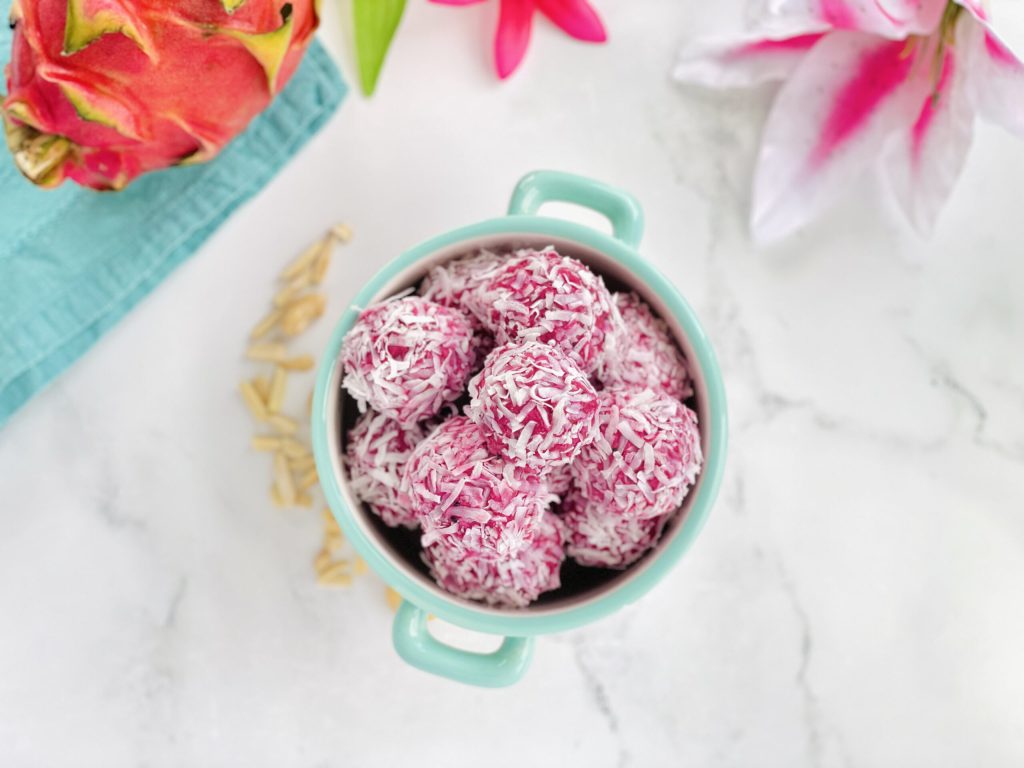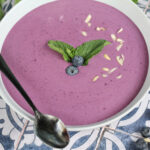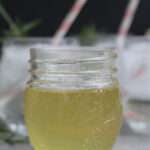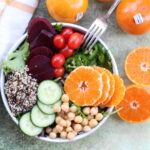Place the dates in a large bowl of warm water to soak for 15 minutes.
Add the almonds and cashews to a food processor and pulse until very finely ground.
Drain the dates, reserving about 1/2 cup of the water. Add the dates to the food processor along with the Dragon Fruit puree, protein powder, flaxseed, salt, and 1/3 cup of the shredded coconut. Blend, dripping in a few tablespoons of the date liquid at a time if necessary to loosen things up, and then drizzle in the coconut oil. The mixture should be chunky but uniform, and resemble a thick batter. Refrigerate for 20 minutes.
Line a quarter-size sheet pan with wax paper and lay another piece on your counter.
Turn the batter out onto the paper on your counter. Place a shallow bowl or plate with water nearby to wet your hands while you roll the balls to prevent the batter from sticking. Using a tablespoon measure as your guide, roll the mixture into bite-size balls that are about 1 inch in diameter. Arrange on the prepared pan with some space in between each.
Transfer the pan back to the refrigerator for 10 more minutes, to allow the balls to firm up again slightly.
Place the remaining shredded coconut in a shallow bowl. One at a time, toss the balls to coat. Arrange them back onto the pan (or on a plate) and refrigerate for at least 1-2 hours before serving, until firm.
Store in an airtight container in the fridge for up to 2 weeks.
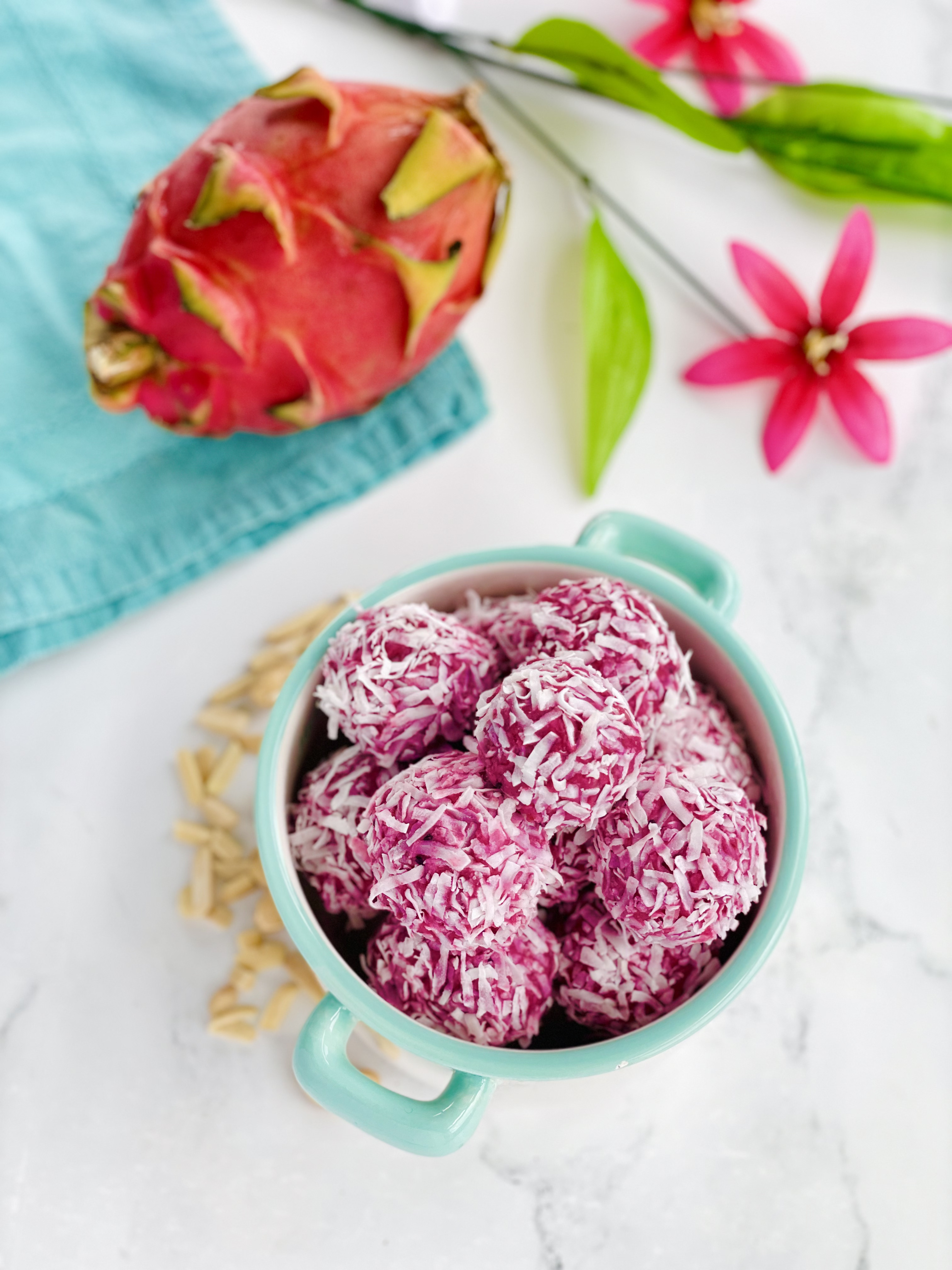
Just Roll with It
Riddle me this: When is the last time you saw something bright pink and thought, “wow, that’s boring.”?
If no-bake energy balls seem like a tired trend, these bold, blushing little rebels will change your mind in one bite. Drenched in red-fleshed dragon fruit’s ruby hue, this tropical snack is as loud as it is nutritious.
Personally, I’m an equal fan of all three forms of dragon fruit. Under the alias “pitaya” and hailing from the Cactaceae (cactus) family, dragon fruit comes in the following genres: yellow-skinned with white flesh, red-skinned with white flesh, and red-skinned with red flesh.

At first glance, both red-skinned varieties seem indistinguishable, but the white-fleshed lacks the pigment betacyanin which gives the red-fleshed its striking magenta color. All of this to say: it’s the pink presentation that makes these protein balls pop.
Try saying that five times fast.
While you work on that, I’ll say this: Have you ever noticed how many health food snacks have warmer tones thanks to ingredients like nut butters, oats, and chocolate?
No hard feelings for my BFF PB and its earthy shade, but these vibrant treats present far more playful than the average energy ball. It’s like the great poet Lizzo once said, “Gotta blame it on my juice, baby.”
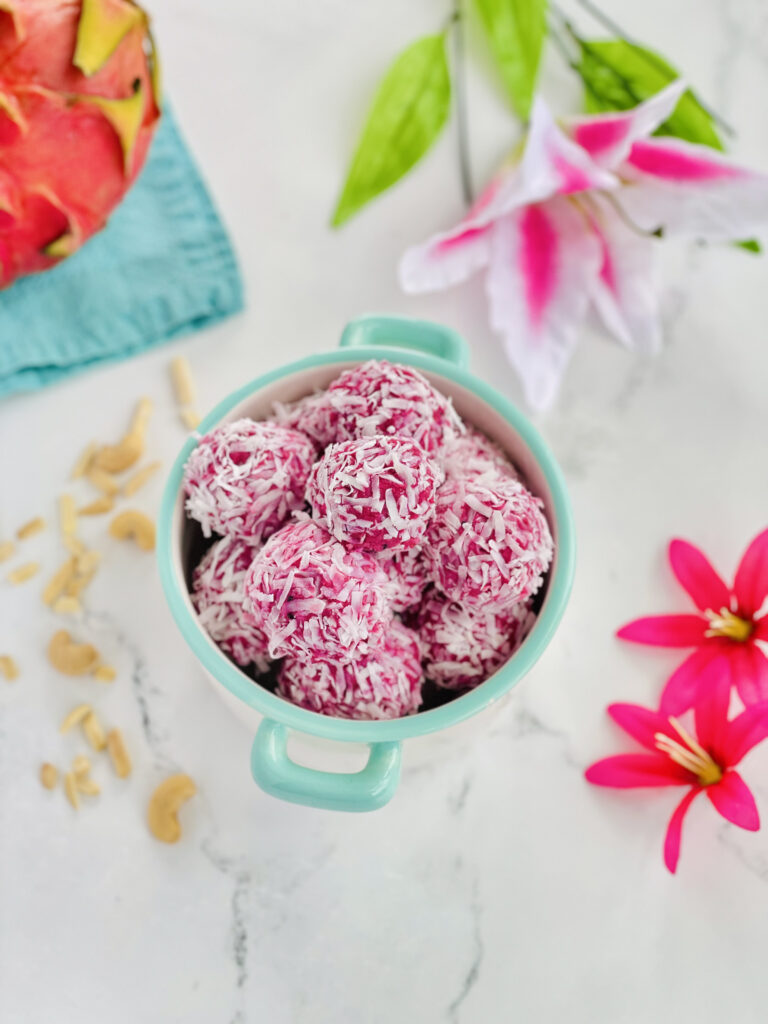
Red-fleshed dragon fruit may not taste as audacious as its appearance, but it does offer a lovely profile of berry-like sweetness with a tangy twist. Add some shredded coconut and you’ll find yourself transported to paradise. Similar to the other two varieties, it’s loaded with essential nutrients, low in calories, and offers abundant health benefits such as immune system support. Additionally, it serves as a good source of dietary fiber, vitamin C, calcium, and iron.
White-fleshed dragon fruit has a firmer texture, making it an excellent choice for dishes where the pulp is sliced and served as-is, while the red-fleshed variety is often used in recipes where its intense color plays a vital part, such as blended smoothies or desserts.
The rich hue also signifies higher levels of certain antioxidants—once again making it a no-brainer for these balls. Delicious, nutritious, and gorgeous? That’s a lot of “ous” and I’m here for it.

Instead of using flour as the base, I opted for raw cashews and almonds pulsed until finely ground. They provide texture and an extra boost of protein. Soaked dates bring sweetness and help things stay sticky—similar to ground flax seed’s role. Binding agents are a must when you’re working with ball-shaped elements (think meatballs, crab cakes, falafel, and the like).
Protein powder adds a woody vanilla kick, and coconut oil fosters firmness while the balls hang out in the fridge.
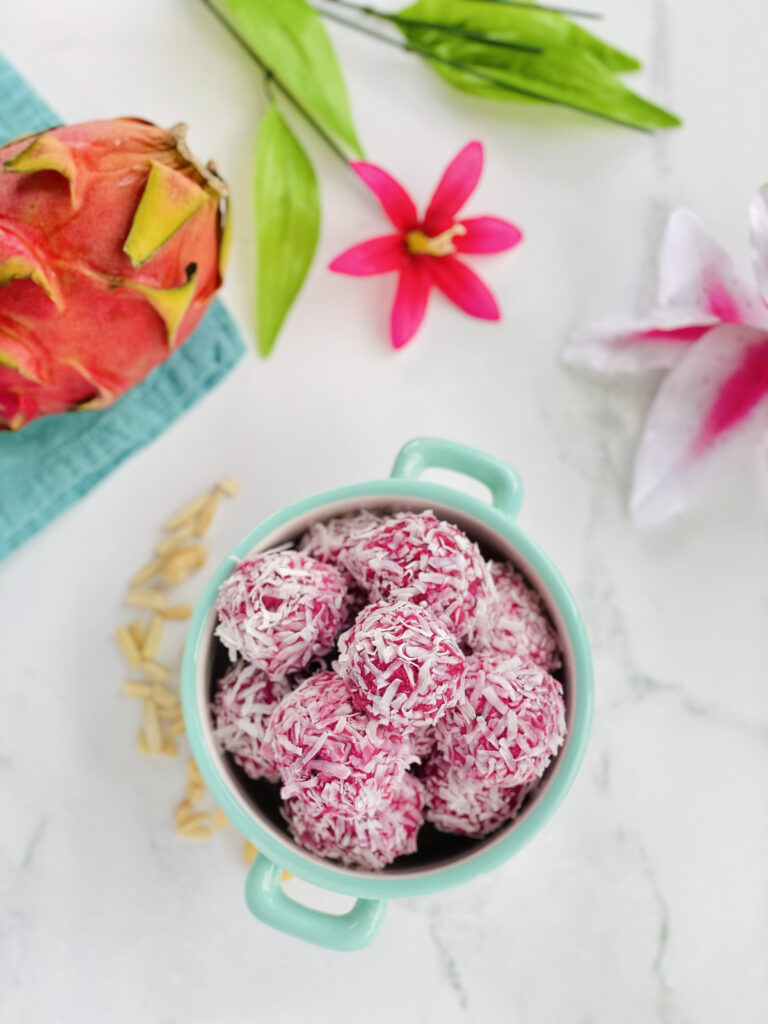
The hardest part of the recipe?
Patiently waiting for the final product to chill to its perfect texture. And hey, if you can’t help but sneak in a few bites before they fully harden, no worries. Just roll with it. Your secret is safe with me.
